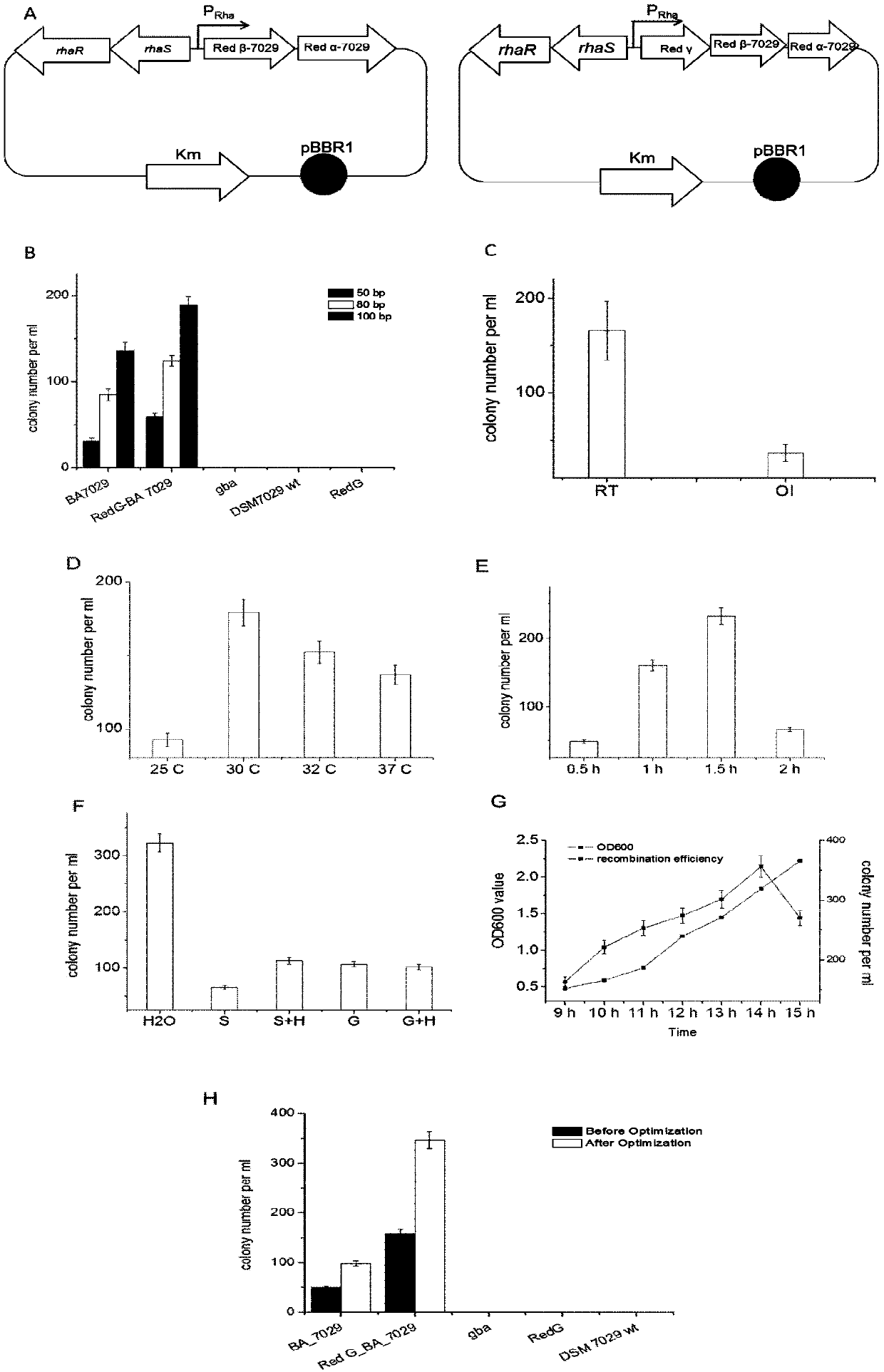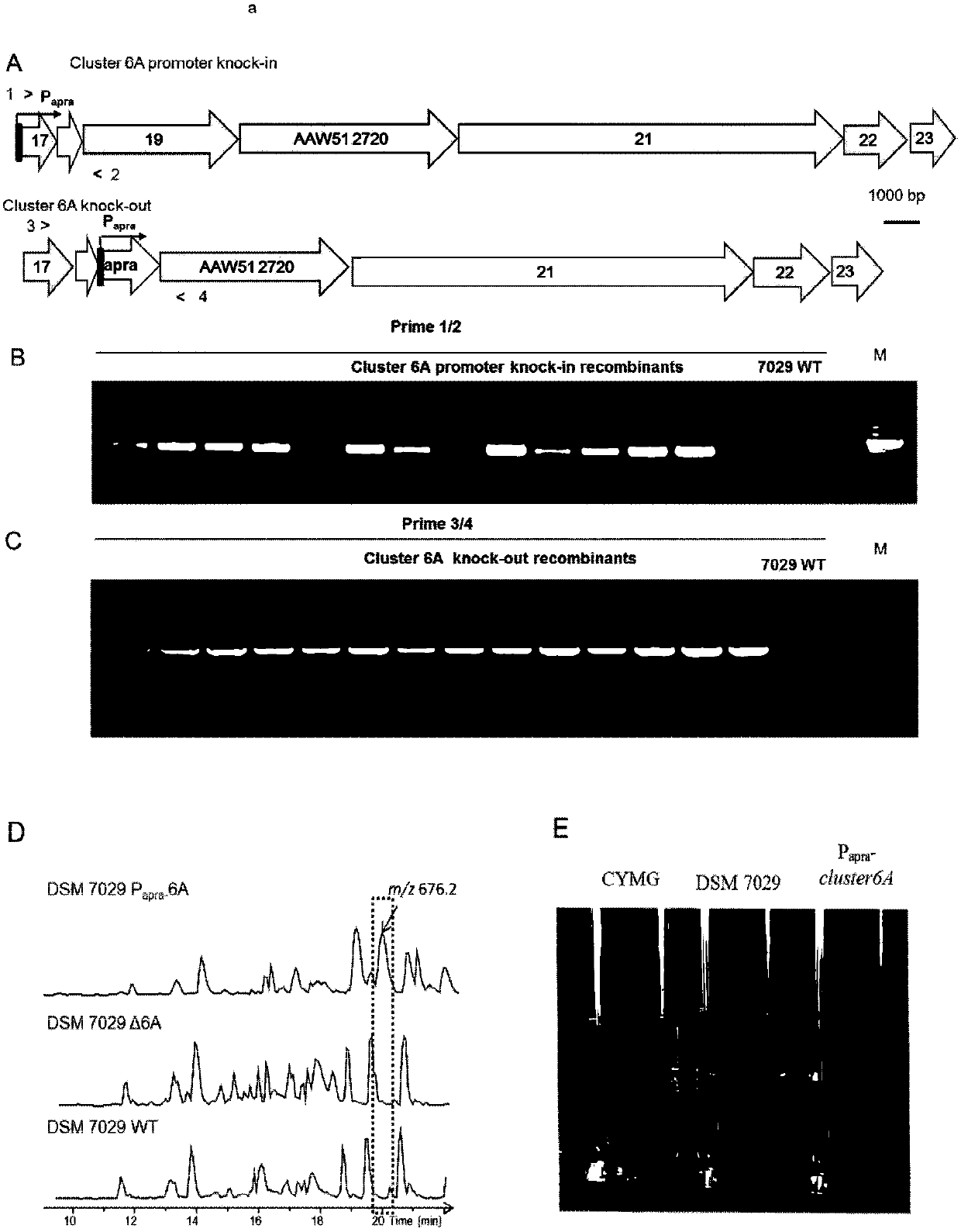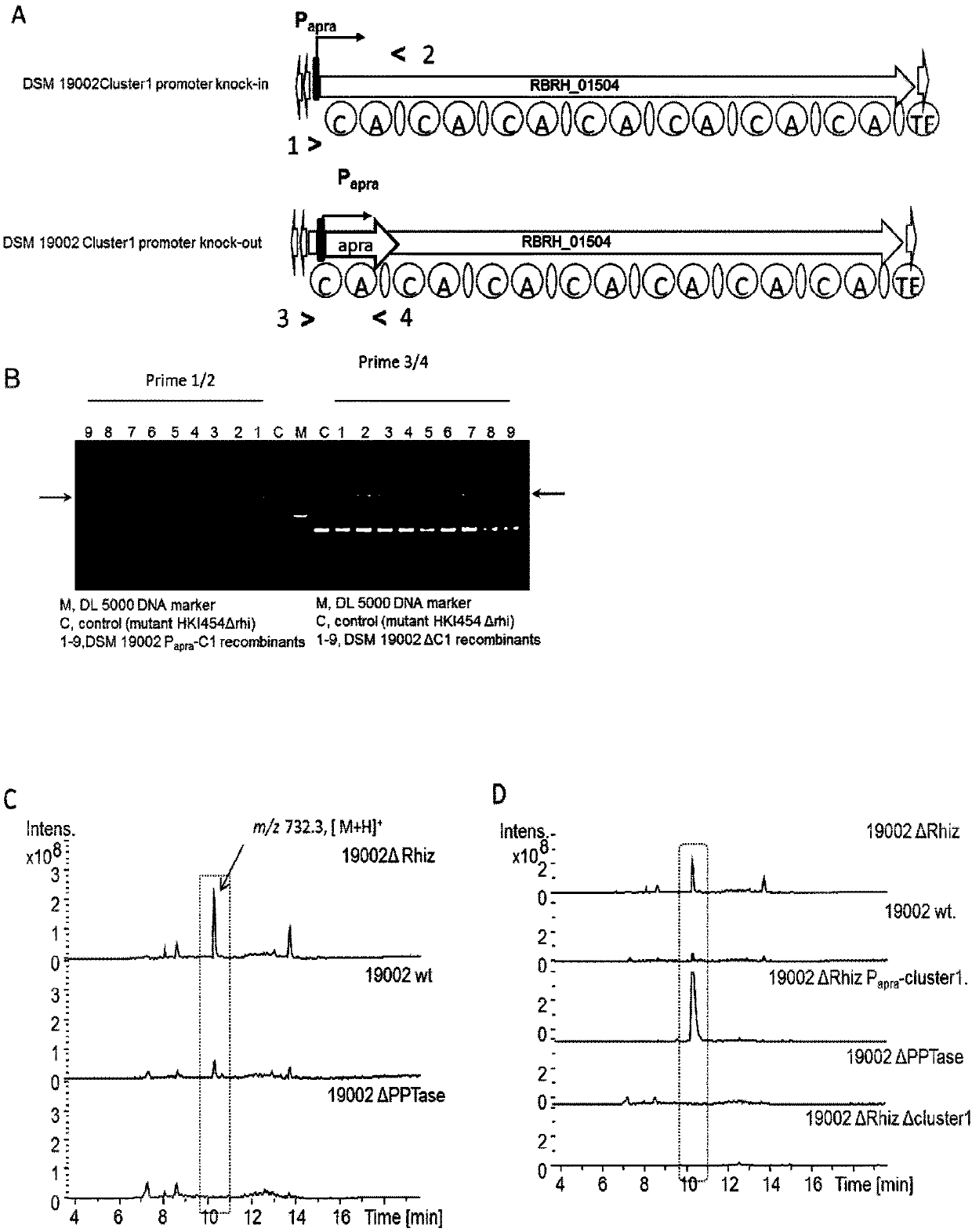A group of homologous recombinases, expression vector and applications thereof
A technology of homologous recombination enzyme and Burkholderia, applied in the field of microbial genetic engineering, to achieve the effect of increasing growth rate and increasing biomass
- Summary
- Abstract
- Description
- Claims
- Application Information
AI Technical Summary
Problems solved by technology
Method used
Image
Examples
preparation example Construction
[0050] Preparation of electroporated cells for recombination:
[0051] Escherichia coli competent cells were prepared according to the procedures reported in the previous literature. Preparation method of Burkholderia competent cells: Pick a single colony from the plate with a yellow tip and inoculate it into a 2.0ml centrifuge tube filled with 1.6ml of liquid CYMG medium with suitable resistance, culture at 30°C, 950rpm for 24h , to about OD600 5.0; transfer 40μl to a new 2.0ml centrifuge tube containing 1.6ml liquid CYMG medium, culture at 30°C, 950rpm for 12-14h, so that OD600 reaches about 1.8; when recombining, you need to add Corresponding inducer, 30°C, 950rpm, induced for 90min, induced the expression of the recombinant enzyme; centrifuged at 9300rpm for 1min, collected the bacteria, and discarded the supernatant. Add 1ml ddH 2 O resuspend the cells, centrifuge again at 9700rpm for 1min, discard the supernatant, and add 1 ml ddH again 2 O resuspend the cells, centri...
Embodiment 1
[0086] Embodiment 1: the screening of Burkholderia homologous recombinase, the construction of expression vector and the optimization of working condition (see list for the primer sequence that embodiment relates to)
[0087] (1) The Burkholderia homologous recombinase Redβ / α-7029 and the construction of the recombinase expression vector were obtained through bioinformatics and transcriptomics analysis and screening.
[0088] It was previously reported that the Red / ET recombination technology in E. coli cannot be used in non-naturally transformed Burkholderia. The present invention proves that the Red / ET recombination technology in E. coli cannot efficiently regulate DSM 7029 and other Homologous recombination in naturally transformed Burkholderia. Genomic deletion and integration in Burkholderia remain a challenge, implying that host specificity is an essential requirement for exonuclease-recombinases. The present invention analyzes DSM 7029 and other putative DNA recombinan...
Embodiment 2
[0103] Example 2: The application of Burkholderia homologous recombination enzyme in obtaining the compound glidopeptin.
[0104] The constructed genetic manipulation system can be used to explore new secondary metabolites. The present invention predicts the presence of several PKSs and NRPSs-like natural product biosynthesis gene clusters on the DSM 7029 genome based on bioinformatics analysis: cluser 6A (3068287-311501 ), cluster 7 (3161734-3234609) and cluster 11 (3950755-4033151). Transcriptomics analysis showed that the core gene expression of clusterer 6A (3068287-3115010) was very low under different conditions. By comparing the LC-MS analysis results of DSM7029 wild type and DSM 7029 and cluster 6A knockout strain fermentation broth, no corresponding gene expression was found. secondary metabolites, so we infer that these two gene clusters are silenced in wild-type DSM7029. In the research of the present invention, RedG-Redα / Redβ7029 was inserted into the constitutive...
PUM
 Login to View More
Login to View More Abstract
Description
Claims
Application Information
 Login to View More
Login to View More - R&D
- Intellectual Property
- Life Sciences
- Materials
- Tech Scout
- Unparalleled Data Quality
- Higher Quality Content
- 60% Fewer Hallucinations
Browse by: Latest US Patents, China's latest patents, Technical Efficacy Thesaurus, Application Domain, Technology Topic, Popular Technical Reports.
© 2025 PatSnap. All rights reserved.Legal|Privacy policy|Modern Slavery Act Transparency Statement|Sitemap|About US| Contact US: help@patsnap.com



